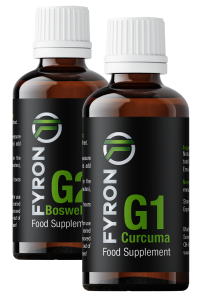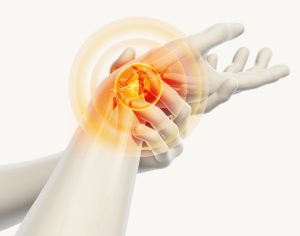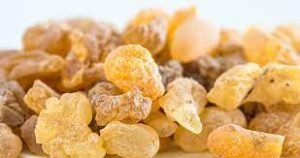Gout is a chronic disease that affects about 1% of the population in Europe. It is the most common inflammatory rheumatism in men (after the age of 40); in women, gout occurs later (after the age of 65).
Gout is characterised by an abnormally high level of uric acid in the blood – known as hyperuricaemia. When this level reaches (or exceeds) 60 mg per litre of blood (i.e. 360 µmol/L), crystals form in the joints and in the soft tissues surrounding the joints: this is when a gout attack occurs.
Symptoms: how do you know if you have a gout attack?
The joint, inflamed by the deposit of monosodium urate crystals, is :
- Very painful: the pain is stabbing and can prevent sleep (sleeplessness),
- Swollen,
- Red or even purplish,
- Hot to the touch.
- Good to know. Although the gout attack most often affects the big toe (in 56% to 78% of cases during the first attack), it can also occur in other joints of the foot (ankle), hand (wrist, fingers), elbow or knee.
Gout attack: what are the risk factors?
People with a family history of gout, but also those suffering from high blood pressure, diabetes (type 1 or type 2), obesity or having a cardiovascular background (having experienced a myocardial infarction, a stroke, etc.) are more likely to have a gout attack.
A gout attack can be caused by a number of factors, such as
- Local trauma: wearing shoes that are too tight, for example,
- Physical or psychological stress: after a surgical operation, for example,
- A diet rich in purine: red meat, beer (even non-alcoholic), strong alcohols, soft drinks, etc.
- Taking certain medicines: aspirin, for example,
- Dehydration: after intense physical effort or prolonged fasting, for example.
How to treat gout?
Gout is a chronic disease: this means that, if left untreated, there are more or less frequent attacks – specialists estimate that the average time between 2 attacks is about 2 years.
Thus, people who have already had a gout attack can recognise the “warning signs”: the joint concerned (usually the big toe) is tingling, mobility may be limited, discomfort or even pain may be felt…
Gout attacks are treated with specific medications: these include colchicine, anti-inflammatory drugs or cortisone (in infiltrations or in tablets). These medicines can be taken at the first signs of a gout attack.
The safest way is for sure to use natural remedies. You will find here the best natural remedies for gout: Gout Home Remedies.
What about Fyron G1 + G2 to treat Gout?
Curcuma and Boswellia are known to be the best plants. Fyron created a revolutionary product made of those plants. You can buy it directly on the manufacturer website to be sure of the quality:
Turmeric and Boswellia are excellent natural remedies for gout due to its numerous medicinal properties.
Here are some ways turmeric can be used for gout prevention and treatment.
Reduced levels of Uric Acid
Gout attacks are caused by an increase in blood uric acid. Turmeric and Boswellia can lower your blood urate level and increase the excretion when you urinate. Don’t forget to drink more water throughout the day!
Turmeric and Boswellia accomplishes this by controlling the activity of proteins involved in the transport of uric acids. They also inhibit certain biochemical pathways, which results in improved kidney function.
These actions increase uric acids excretion and decrease the chance of uric Acid buildup.
Reduced Inflammation
Gout is an inflammation disease. Turmeric and Boswellia are anti-inflammatory agents. However, it works differently to other anti-inflammatory agents.
Conventional anti-inflammatories only target one inflammatory enzyme. Turmeric and Boswellia, however, can affect multiple inflammatory enzymes and inflammatory pathways. This makes those plants more effective than other treatments.
One study showed that turmeric could modulate 30 molecular targets, which can help to reduce inflammation in the body.
Pain Relief
Turmeric and Boswellia are potent pain reliever that can also reduce inflammation and swelling. Its effects can be compared to popular painkillers such as aspirin, according to studies.
It is possible to use Turmeric and Boswellia to relieve pain instead of traditional painkillers. Your body won’t develop a tolerance like it does to other remedies.
Turmeric and Boswellia are also very effective in relieving pain. One study showed that patients suffering from gout who took turmeric and Boswellia supplement felt relief almost as fast as if they had taken an anti-inflammatory medication. In just 24 hours, these patients experienced a significant decrease in pain.
Increased weight loss
Obesity and overweight increase the risk of high levels of uric acid. This increases the risk of having a gout attack.
When combined with a healthy diet and exercise routine, it has been proven that Turmeric or Boswellia are very effective in reducing body weight and overall body fat. While you still need to work hard to lose weight, turmeric can give you a little boost.
Improved Metabolic Health
Turmeric and Boswellia are not only beneficial for weight loss, pain and inflammation. They can also improve metabolic health and the following functions:
- Lowers cholesterol
- Lower blood pressure
- Protects the heart
- Relieves metabolic syndrome symptoms
These metabolic processes can be improved to reduce the chance of uric acid buildup and the likelihood of suffering from a future gout attack.
Side Effects
A great reason to use Curcumin and Boswellia for pain relief rather than traditional painkillers is that they doesn’t have many, if any, side effects.
This is not true for traditional pain treatment. Many of these medications, including NSAIDs such as ibuprofen have been shown to increase the risk of developing problems like acid reflux, gastric ulcers, or gastritis (gut inflammation).
These issues are not caused by Turmeric or Boswellia, but they can be prevented. Its gastroprotective properties make turmeric and Boswellia safe to be taken on its own, or with other painkillers as a precaution. What is sure, is that Turmeric and Boswellia have fewer side effects than other painkillers.
Gout sufferers can take Turmeric and Boswellia supplements as preventive measures. You can take them at the same times each day to make it easier for you establish a routine and make them part of your daily routine. If you are experiencing gout attacks and need pain relief or to reduce inflammation, you can also take turmeric and Boswellia supplements. Supplements should be taken with food, especially if you are eating a lot of fat. Turmeric and Boswellia's anti-inflammatory compounds are fat-soluble. You won't get the same benefits if your supplements are taken with water. You will see turmeric lattes made with coconut milk and coconut oil. The fat gives you more benefits. Gout treatment with turmeric and Boswellia is not a one-size fits all. Your age, weight, and any medications you are taking will all affect the amount of turmeric you need to take. Many studies showed that patients receiving treatment with turmeric and/or Boswellia used supplements that contained 500 mg twice daily. Most people are safe with turmeric and Boswellia; only some people have had mild side effects from using those plants. These are some of the most common side effects reported by turmeric: Women who are nursing or pregnant should not take turmeric supplements. It is best to avoid turmeric or Boswellia supplements for people who are taking blood thinners or diabetes medication. When turmeric is added to a supplement regimen, blood clotting herbs such as angelica or ginseng may also experience adverse reactions. There are many options when it comes to turmeric being used for gout. You can also add the spice to your favourite foods. A turmeric latte can be made by adding a teaspoon of turmeric to coconut milk, fresh ginger, and some honey. Turmeric supplements are also popular. These capsules and tablets contain turmeric. Many times, these supplements contain other ingredients that enhance the effects of turmeric, such as Boswellia. Turmeric products are a great choice for those who don't like the taste of turmeric. It is also easier to remember to take a vitamin each day than to change your favorite recipes to include turmeric. Boswellia serrata is a natural pain killer since it has active ingredients like boswellic acids (acetyl-11-keto-b-boswellic acid) that are super powerful anti-inflammatories that actually prevent inflammatory white cells from getting into the damaged tissue. They increase blood flow to inflamed joints, which helps repair damage from inflammation or gout attacks. It has been known to provide pain relief for joint inflammation, arthritis, and gout. It can also be used to treat bursitis and tendonitis, fibromyalgia as well as Crohn's disease, Crohn's syndrome, carpal tunnel syndrome, and dry or chapped skin. You can make incense, cosmetics, and skin care products with Boswellia! But the most common use is to definitly to treat arthritis, such as osteoarthritis and gout. Gout is a painful condition that results from excessive levels of uric acid in your blood. Gout can be caused by genetics, obesity, lead-exposure, and eating foods high in purine. Gout can be controlled by avoiding purine-rich foods. This can be difficult to do. However, it is possible to remove some foods that have high purine levels from your diet. Why are they one of the main causes of gout? Purines are chemical compounds that are found in our cells and in the foods we eat. Because uric acids helps protect our blood vessels' linings from damage, purines must be broken down into uric. However, uric acid levels that are too high can lead to serious health problems. Gouty arthritis is caused by uric acid crystallizing and getting deposited in the joints, kidneys, and other organs. Purines are essential for our health. However, we must ensure that they do not become a cause of gouty arthritis. However, not all purines are created equal and it is not possible to say that every food we eat causes gout. Gout is most commonly caused by purines from meat, fish, and vegetables. Purines found in dairy products are not thought to be a cause of gout. In fact, they may help prevent it. If a person's diet is suspected to be a cause of gout, they are advised to eat a low-purine diet. If a person's condition is already severe, they are asked to reduce their daily intake of purines to between 100 and 150 milligrams. You should know that a 3.5-ounce serving each of anchovies and mackerel, mussels or kidney, liver, or other meat products can contain up to 1,000 mg of purines. Gout can also be caused by legumes (green and dried peas as well as lentils and beans), and other foods like asparagus, broccoli, spinach, wheat bran, and wheat germ. Beer is also known to cause gout, as it contains yeast. Gout sufferers must remember that a high-fat and high-protein diet is one major cause of gout. It is best to avoid fatty white meats, beef, and roast chicken. Gout sufferers should eat a diet low in fat and protein, and high in complex carbohydrate intake. Alkaline foods counter high levels of urinary acid. Alkaline foods include bananas, potatoes and oranges as well as figs, dandelion leaves, and chocolates. These foods should not be harmful to any other health conditions the person may have. Gout is often treated with prescription drugs. However, many people are concerned about the side effects of these medications. You might be better off looking into natural remedies for gout, as these drugs could cause abnormal reactions in your body. For example, NSAIDs can increase the risk of a stroke or heart attack if taken in high doses or for a long time. Gout attacks can be controlled with NSAIDs. This drug can also reduce the body's defenses against infection by reducing blood cell count. Allupurinol can also lower blood pressure, which is very harmful for pregnant women. Allupurinol should not be taken by people with liver disease, kidney disease or diabetes. Natural remedies for gout are a better option to manage the disease, as all the above reasons indicate. Gout treatment can be done naturally. Before you try any of these, consult your doctor. Avoidance of high-purine foods such as beer, sardines, herring, or herring is one of the best natural remedies for gout. These foods increase uric acid levels. Natural health experts recommend drinking horsetail tea and stinging nettle, as well as celery and mustard seeds, to eliminate uric acid buildup in the body. Natural remedies for gout include Poke Root and Devil's Claw herbs. Gout can be treated with cherry concentrate. A tablespoon of cherry concentrate is one of the most well-known natural remedies. Warm Epsom salts can be used to soothe the pain in the bigtoe from a gout attack. Epsom salts contain magnesium, which helps to improve blood circulation and flush out toxins. People who have tried this method claim that Epsom salt foot baths are one of the best natural remedies for gout. Gout sufferers can also chew garlic, which lowers uric acid levels. Gout can also be treated with activated charcoal. To make a poultice, mix half a cup of activated charcoal with two tablespoons flaxseed and warm water. Wrap the affected area with plastic or cloth and apply this to the swollen joints. Apply it at night, but change it every four hours throughout the day. Vitamin C is also included in our natural remedies for gout. Eat plenty of vegetables and fruits, or take Clinical analysis indicates that devil's claw could be of benefit in preventing gout - along with relieving pain, in addition, it reduces serum cholesterol and the crystals ranges. It is primarily useful for kidney stones, urinary bacterial infections, rheumatism, and gout. This is a diuretic herb that helps decrease the crystals. The anti-inflammatory properties are advantageous for relieving pain and irritation related to arthritis. I medieval Europe it had been used in diuretics and treatments for pain. Which irritate your skin on contact. If the nettles contact a location already in pain, the chemical substances can reduce it. Fresh, young dandelion results in have high supplement A and C articles. When eaten natural in salads, they help convert the body repair damaged cells. Dandelion wine is also thought to have therapeutic advantages for gout. If producing dandelion wine appears like a chore, a straightforward recipe will be to mash one glass of flowers and include it to four glasses of white wine. Allow it sit for per month then stress and sweeten to flavor if essential. Nettle root can be considered good for gout and is accessible at most health food shops. Turmeric, an important ingredient in curry powder, is really a close relative of ginger. Due to the powerful anti-inflammatory action it really is utilized medicinally for inflammatory circumstances like gout.How to use Turmeric and Boswellia Supplements?
How much Turmeric or Boswellia should I take?
Who should not use Turmeric or Boswellia?
How to use Turmeric to Treat Gout?
What is Boswellia used for?
What is gout?
Why are purines bad for gout?
Do we need purines?
What foods causes gout?
Hoe does a proper gout diet looks like?
How to treat gout pain?
Why to naturally treat gout?
What to take for comabting gout?
Can epsom salts be used to treat gout?
What are great tips to treat gout symptoms?
Should you try devil's claw as a gout treatment?
How to eat against gout condition?
What herbs should you use for gout combat?




